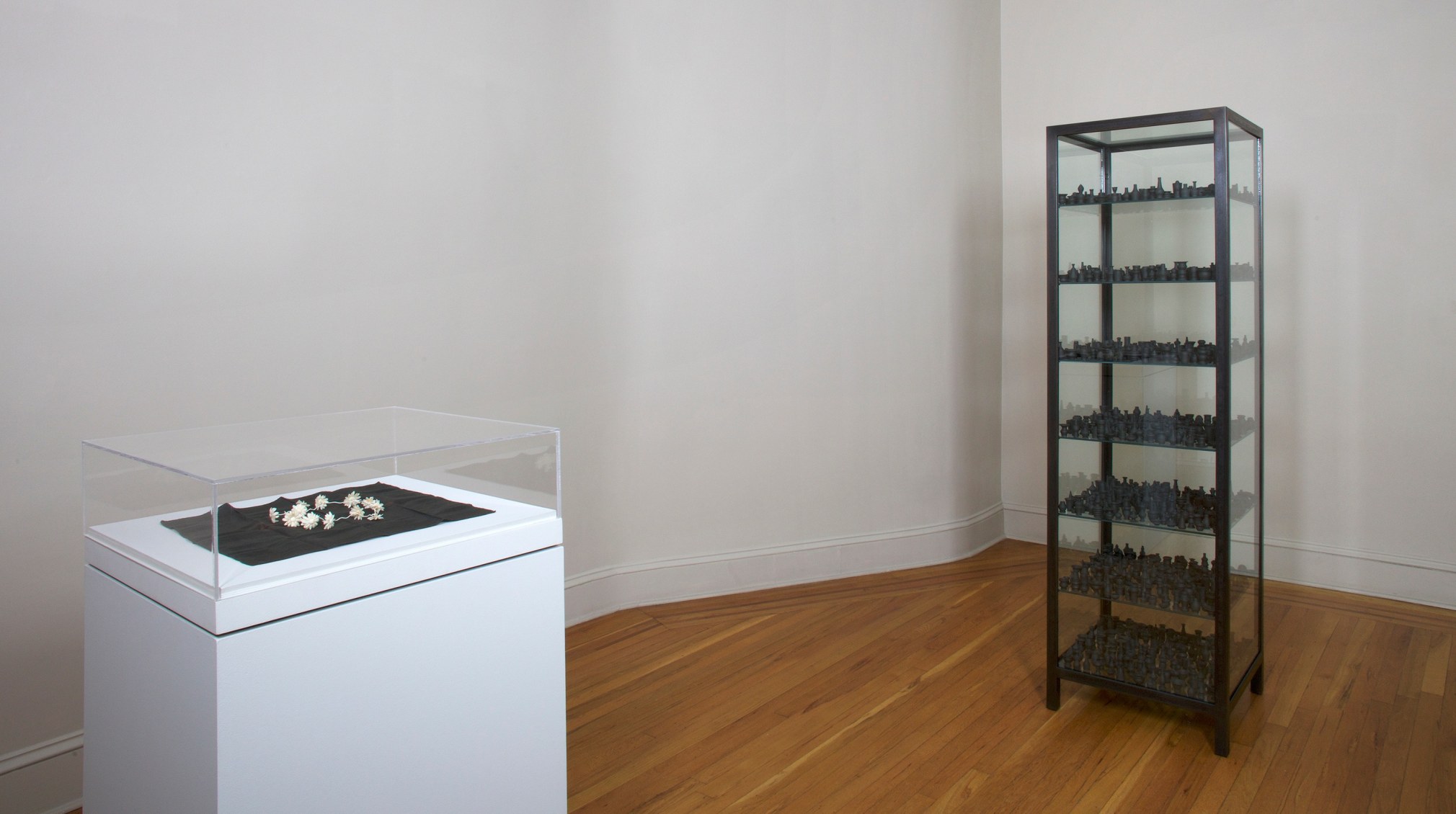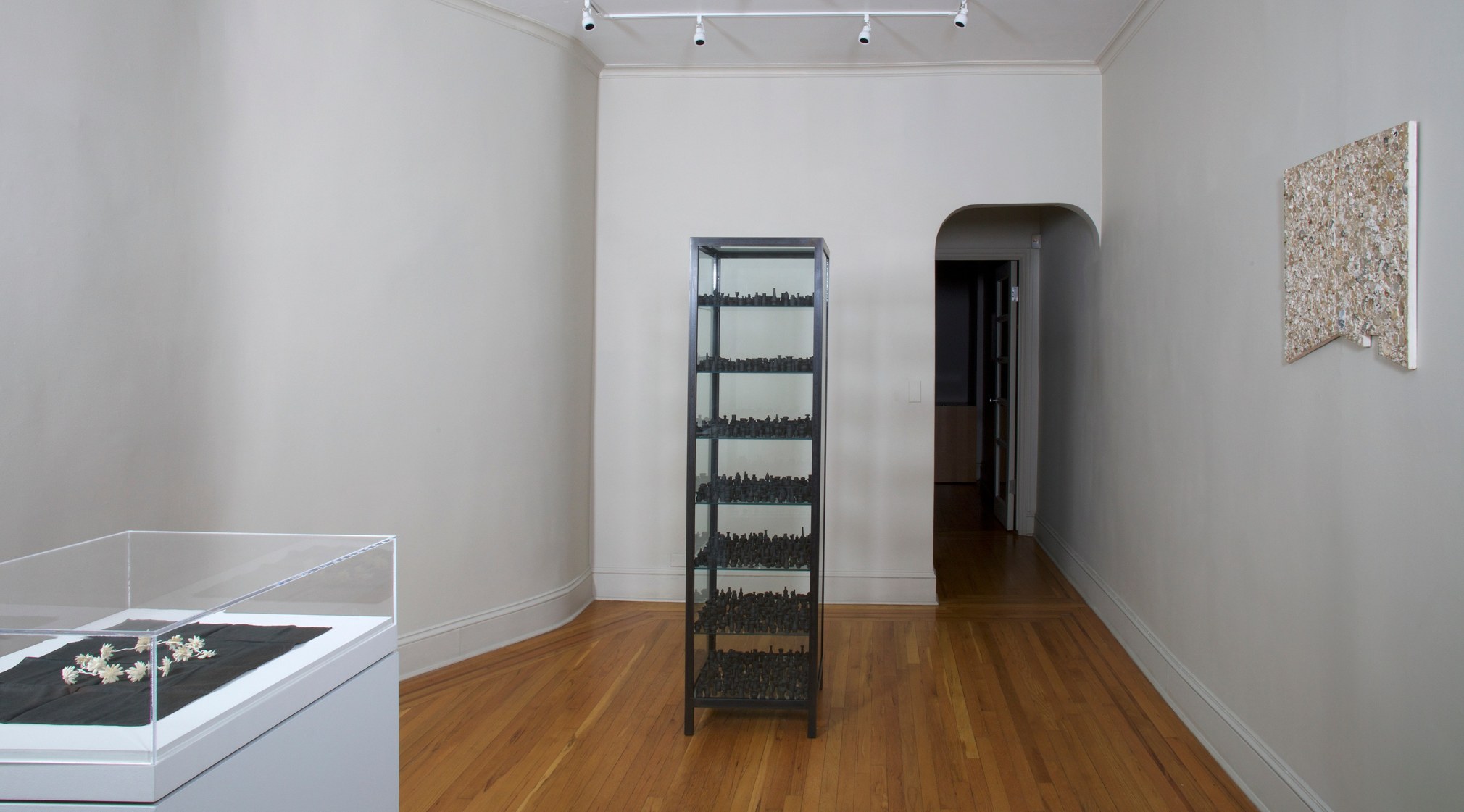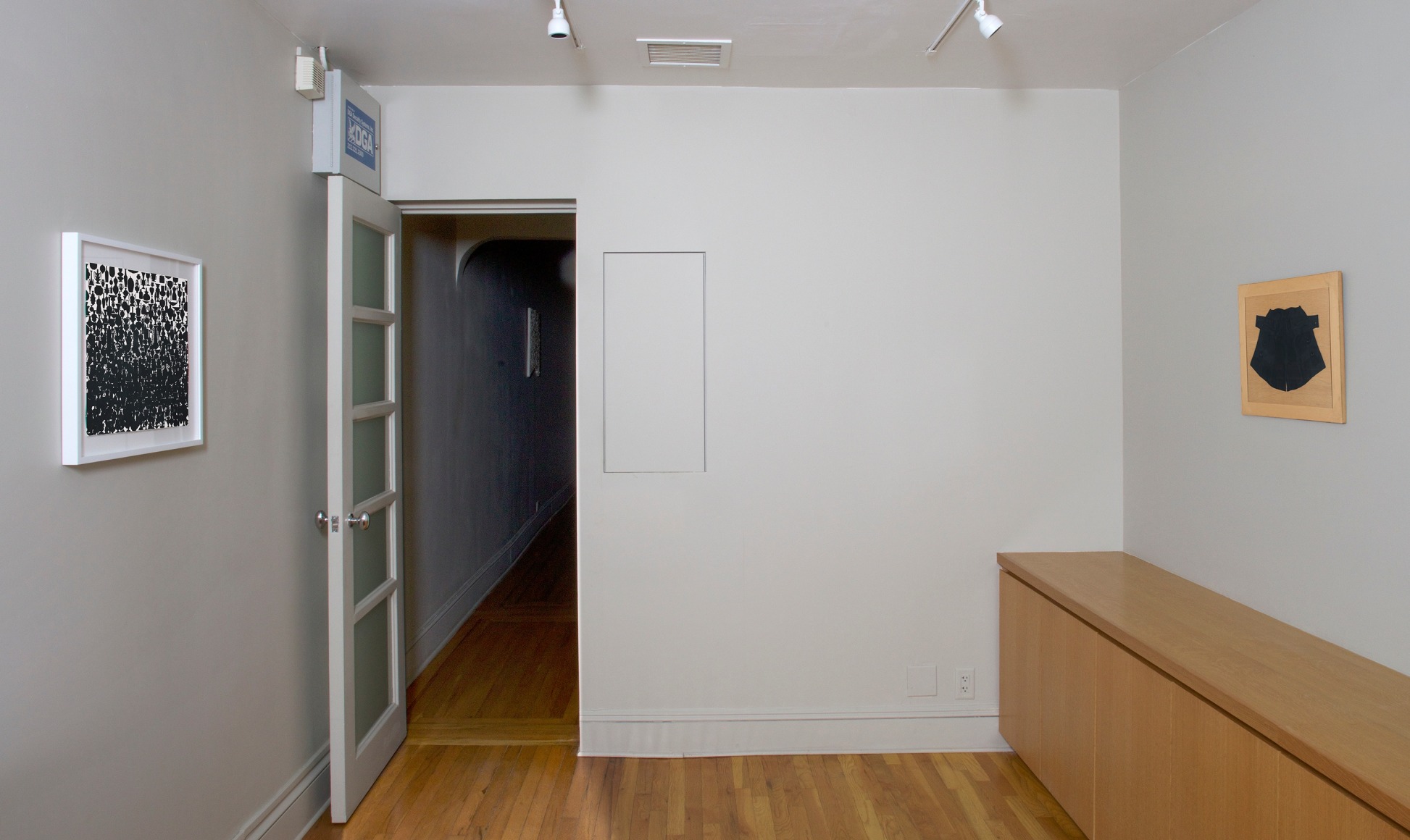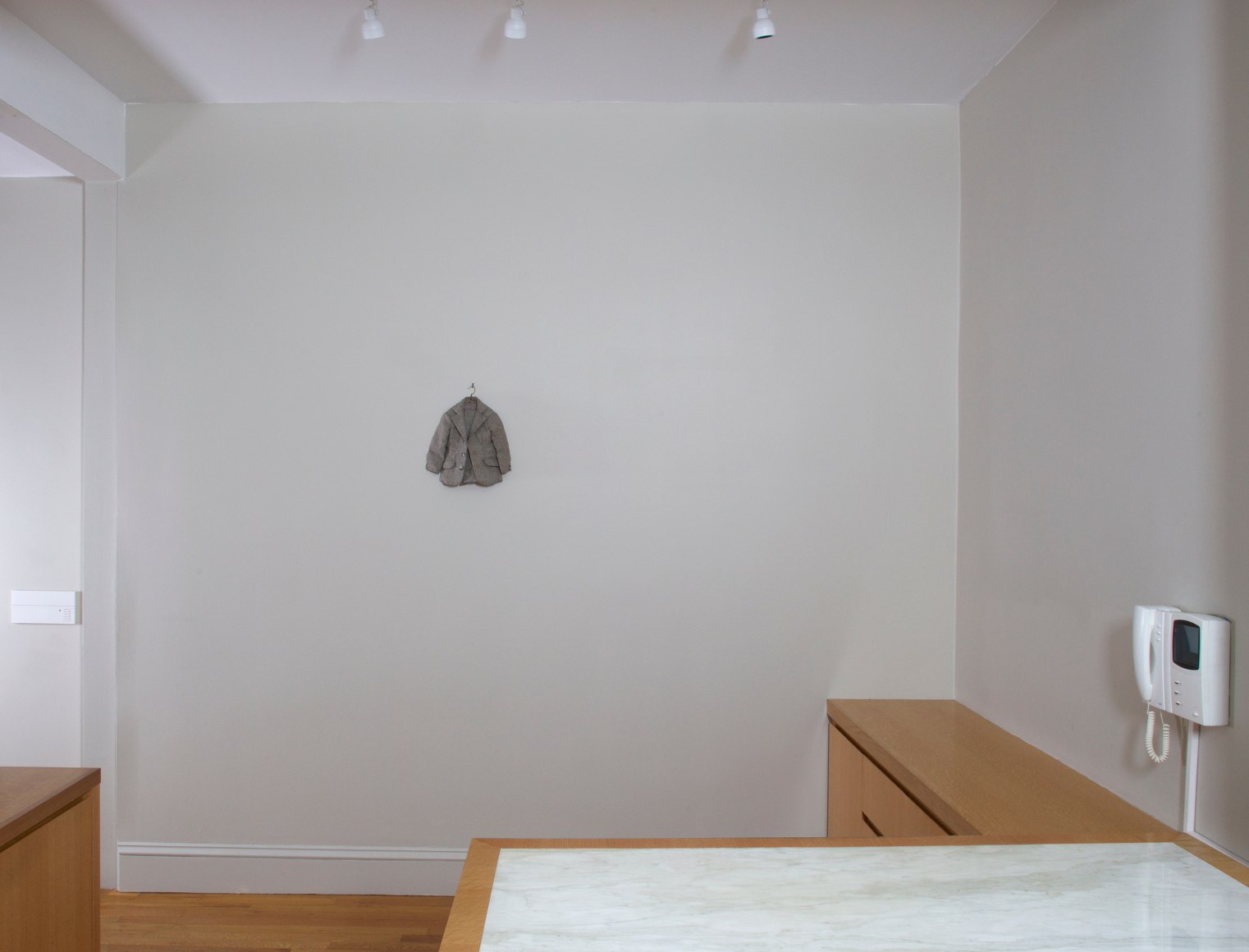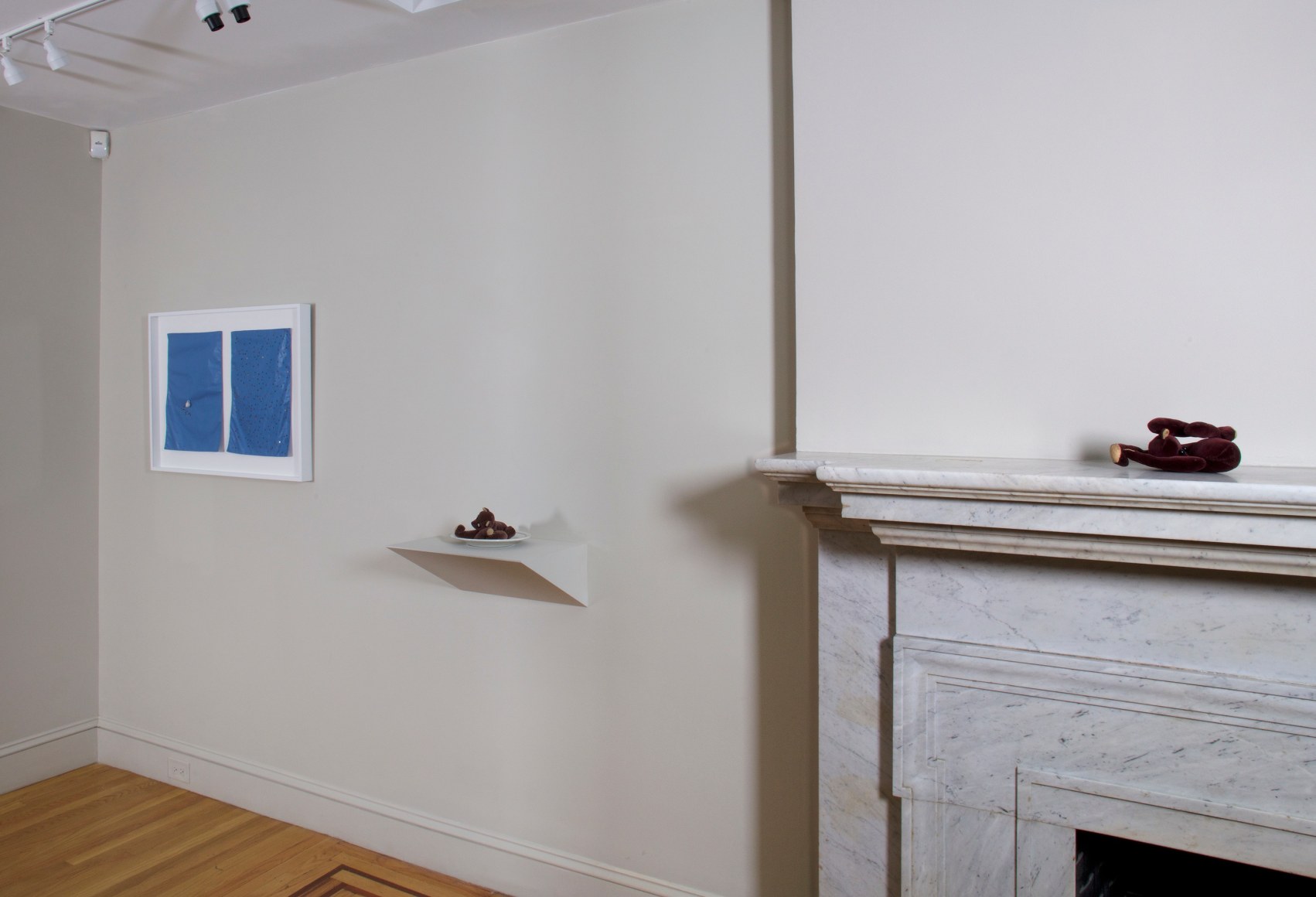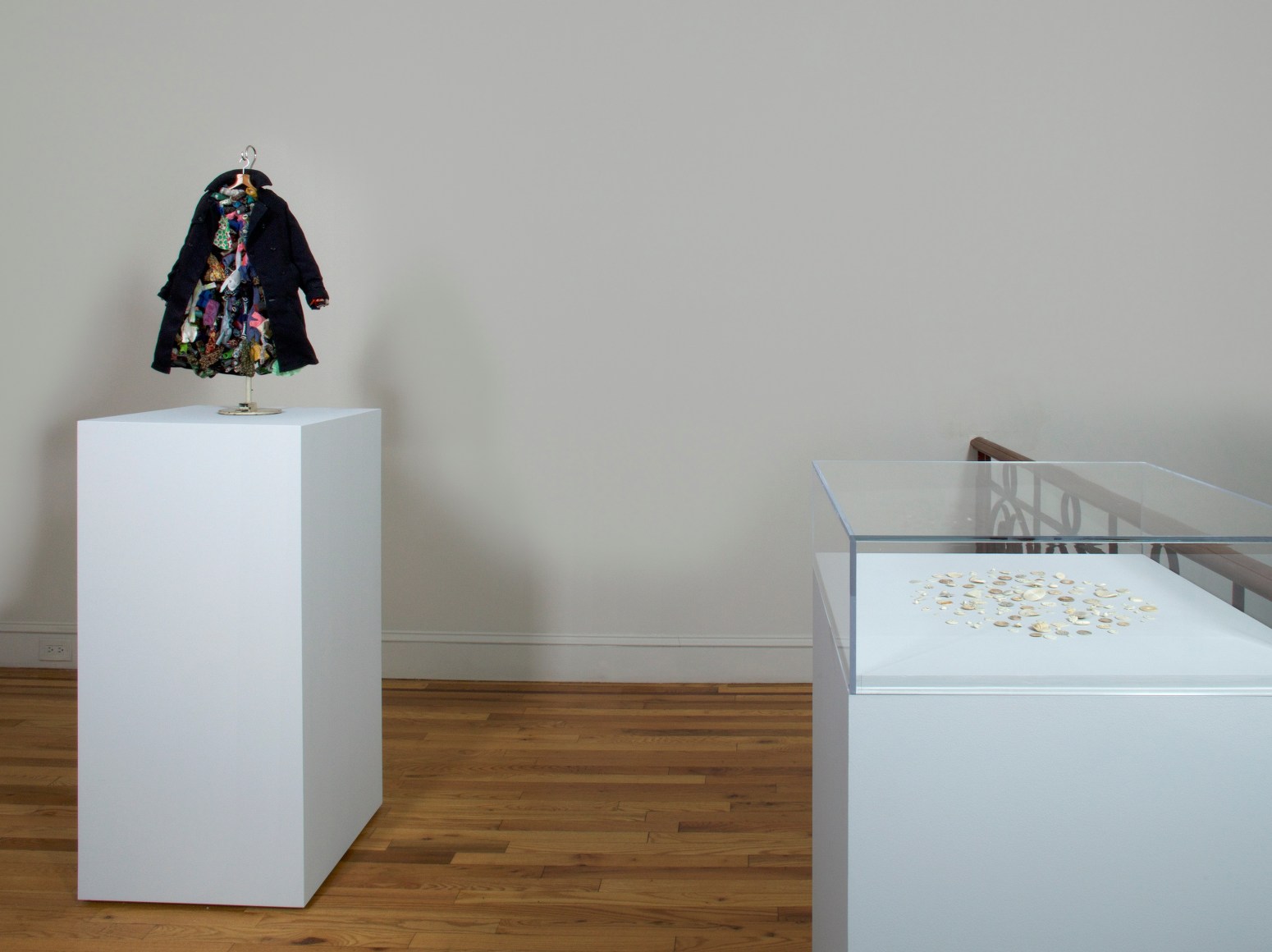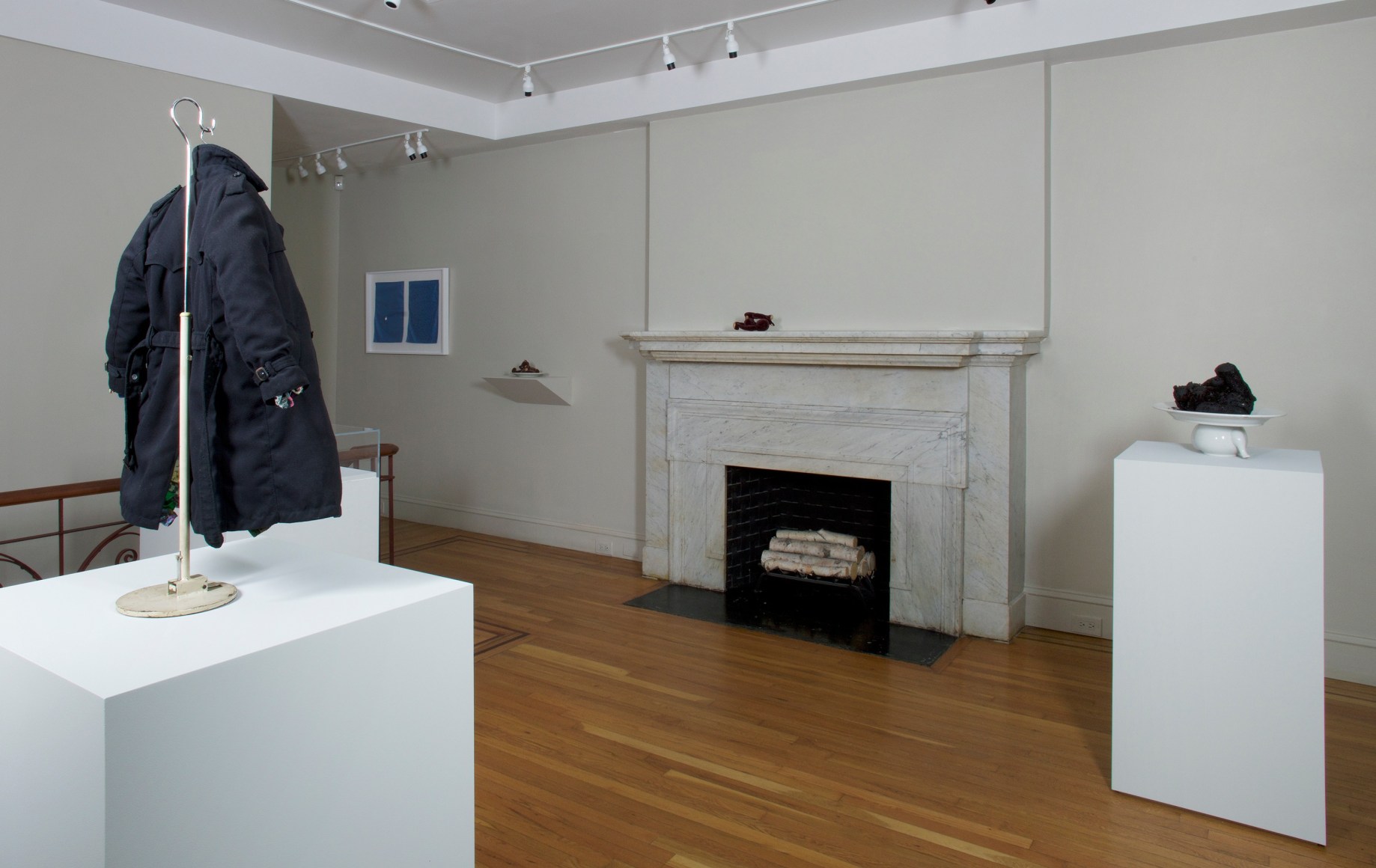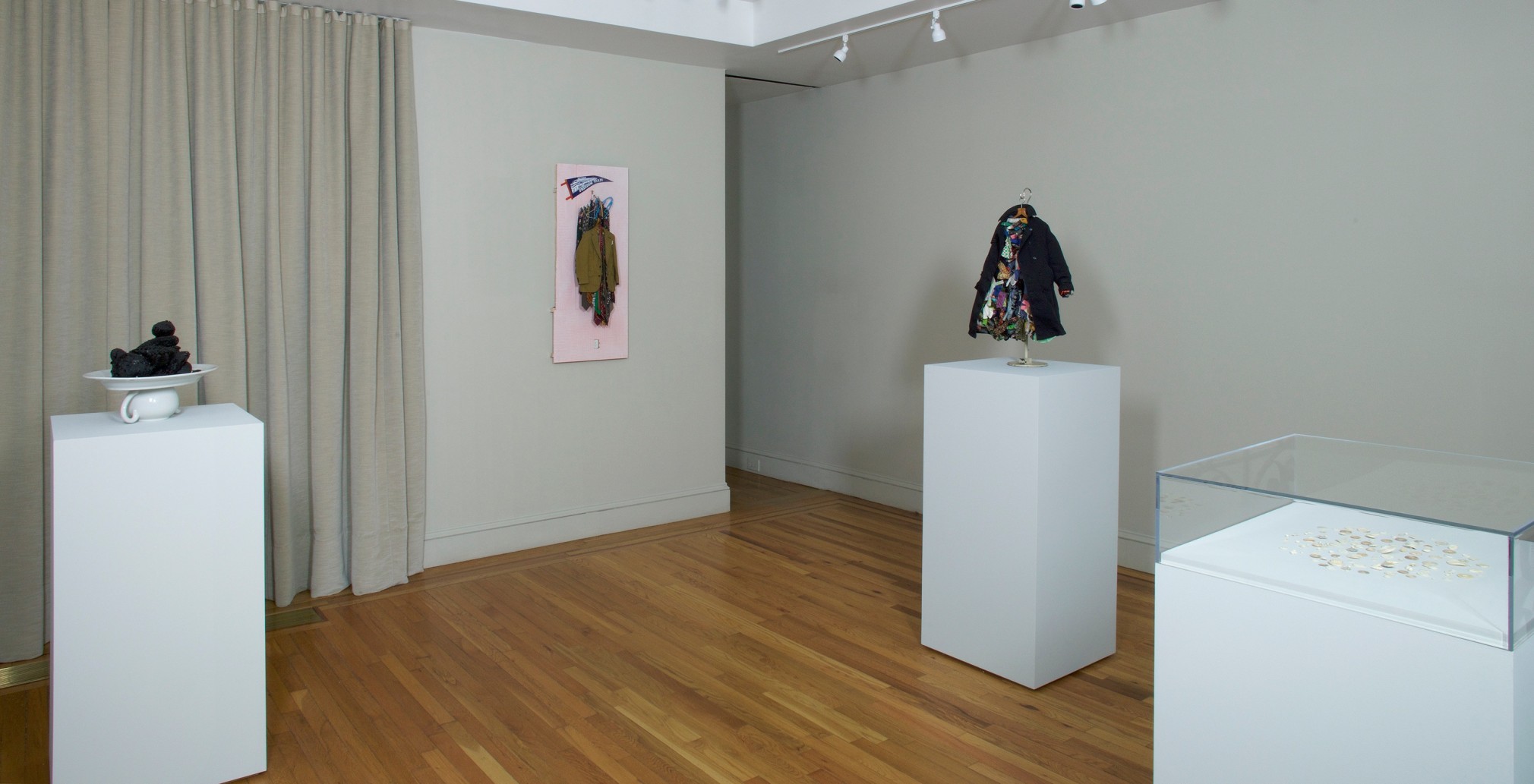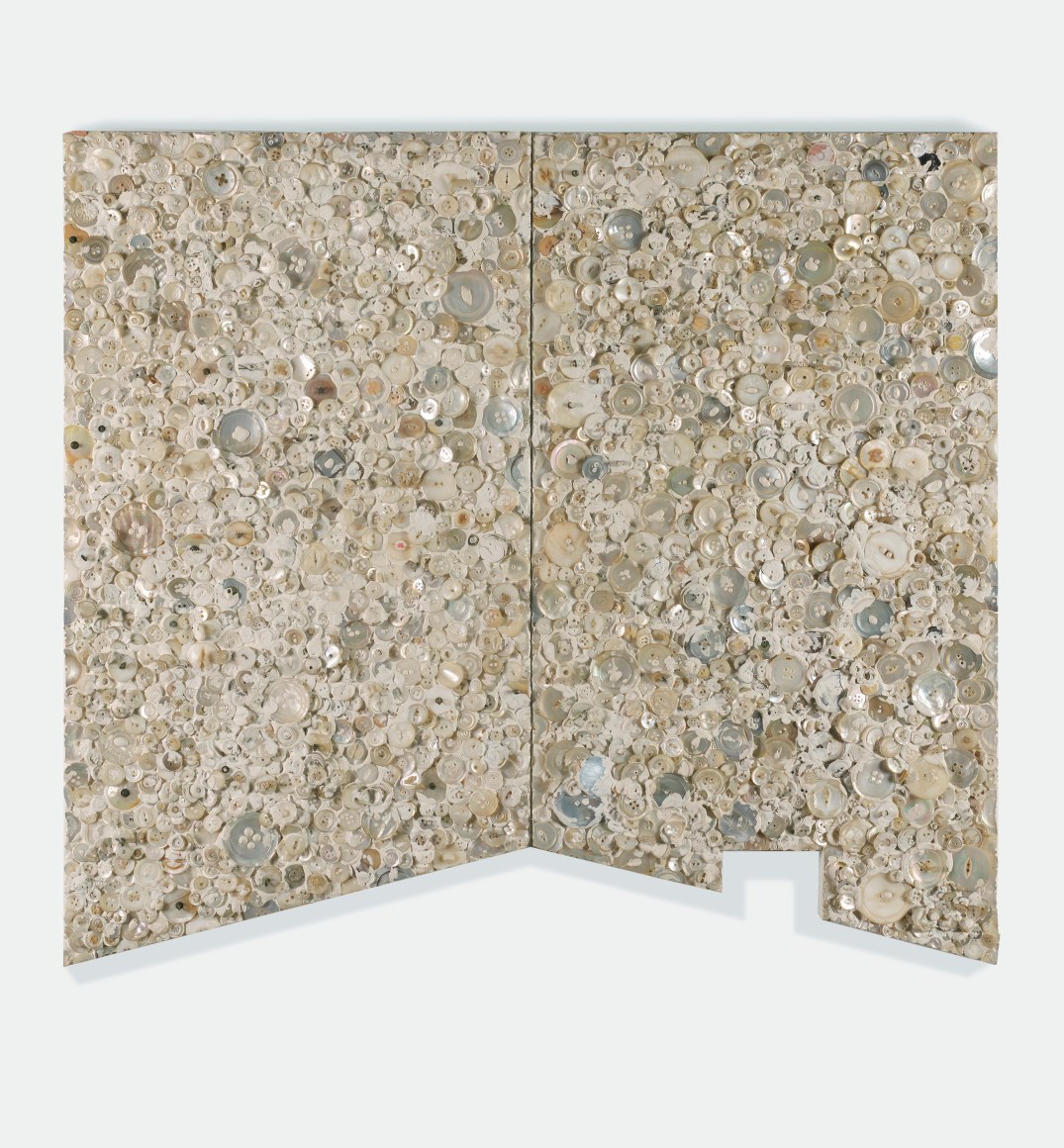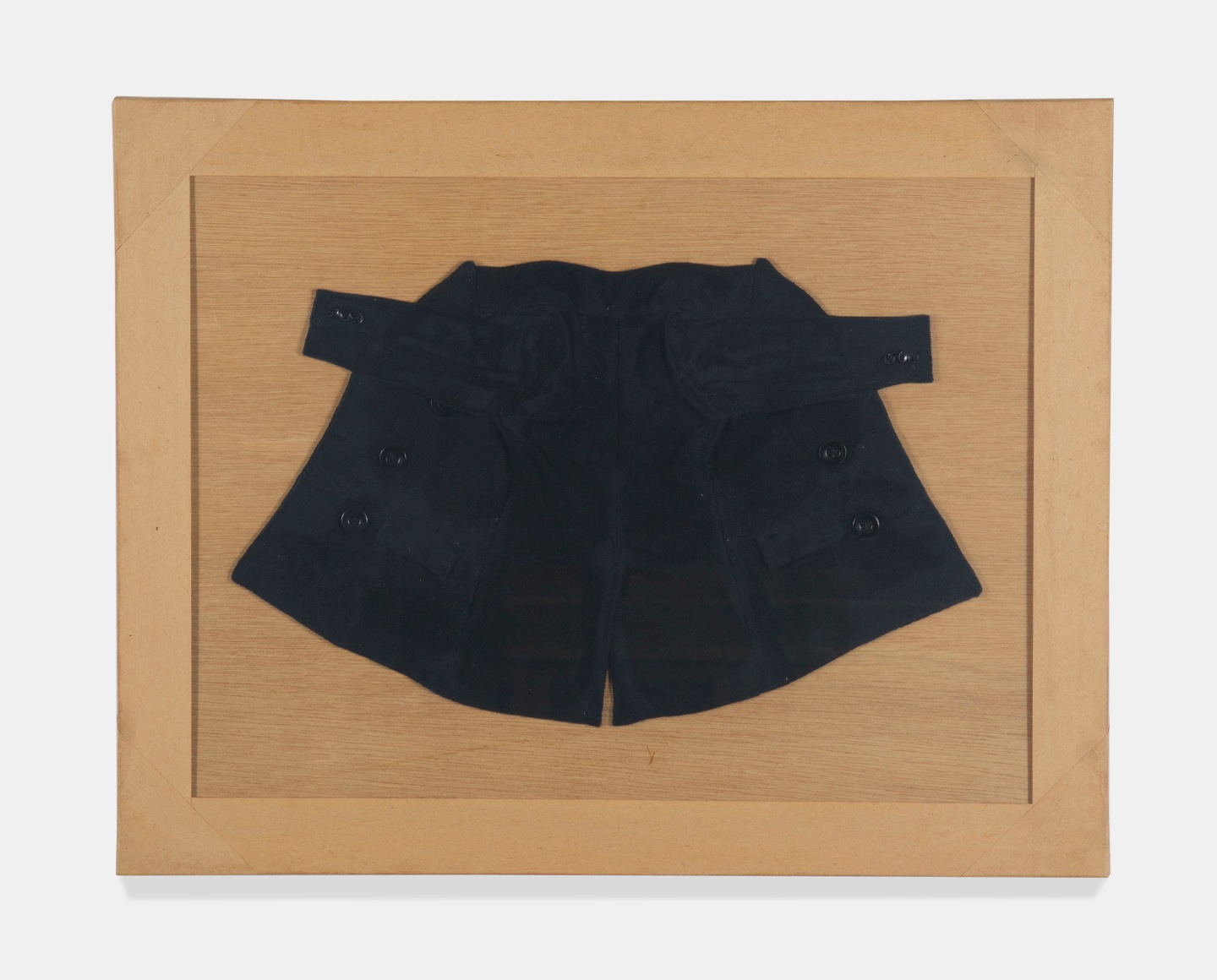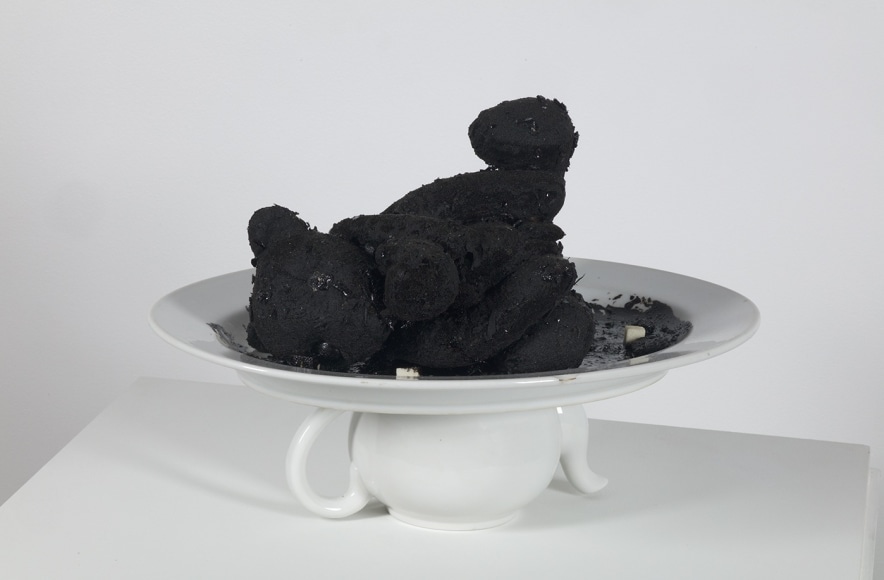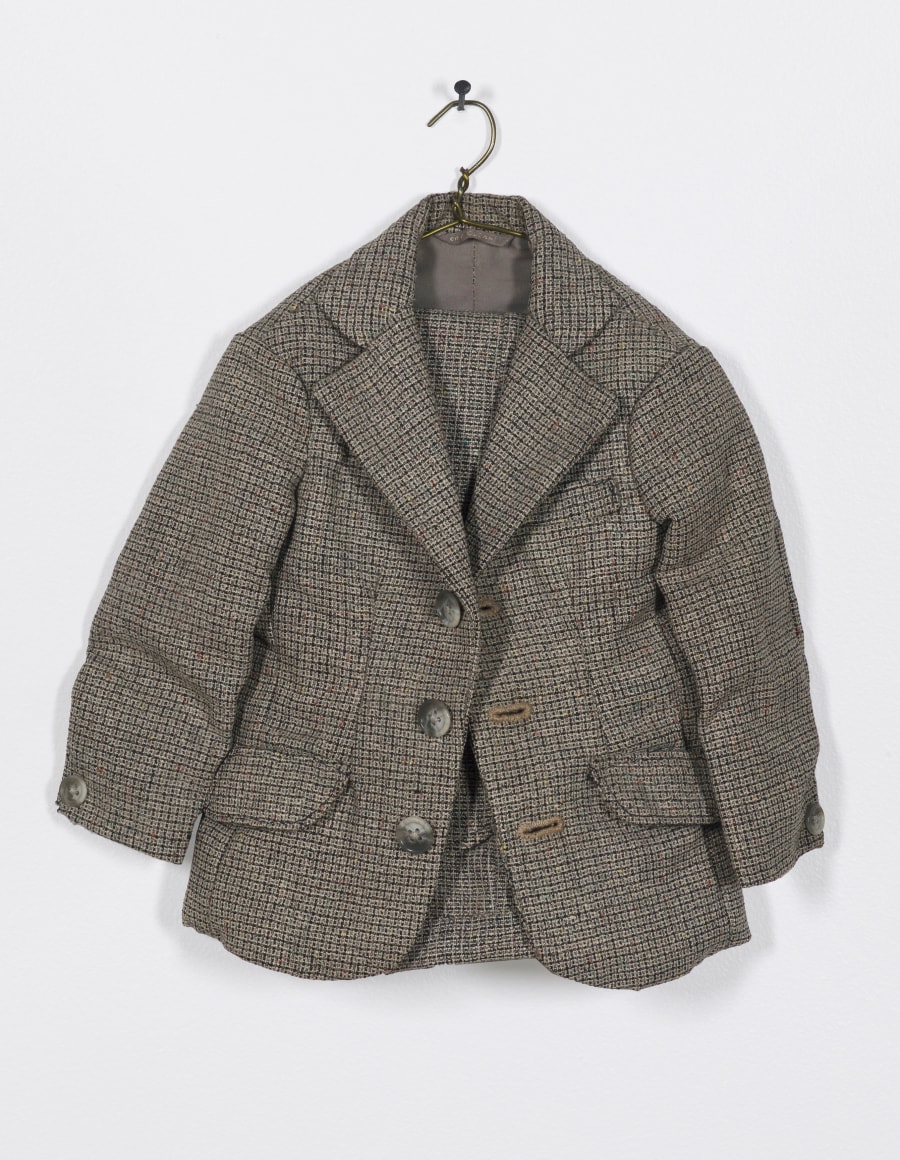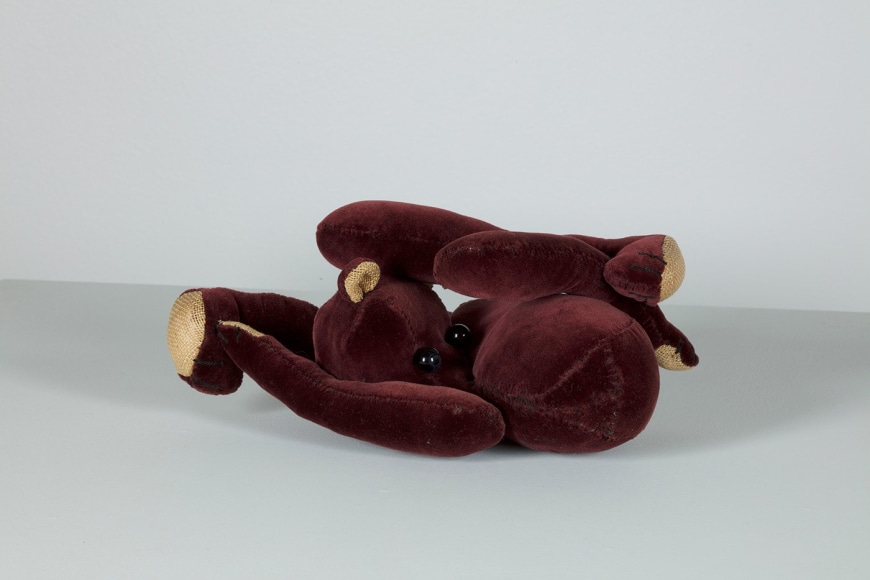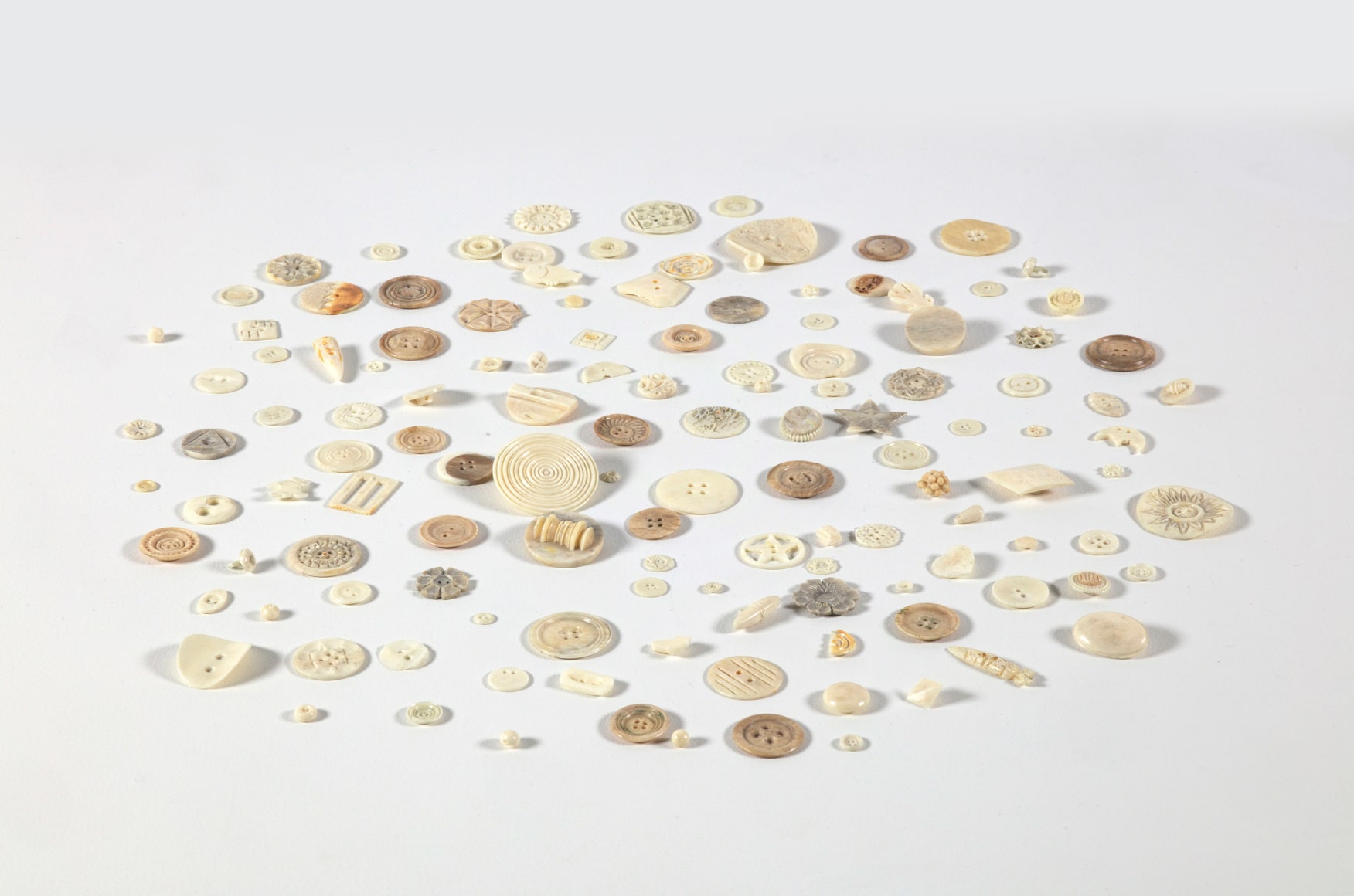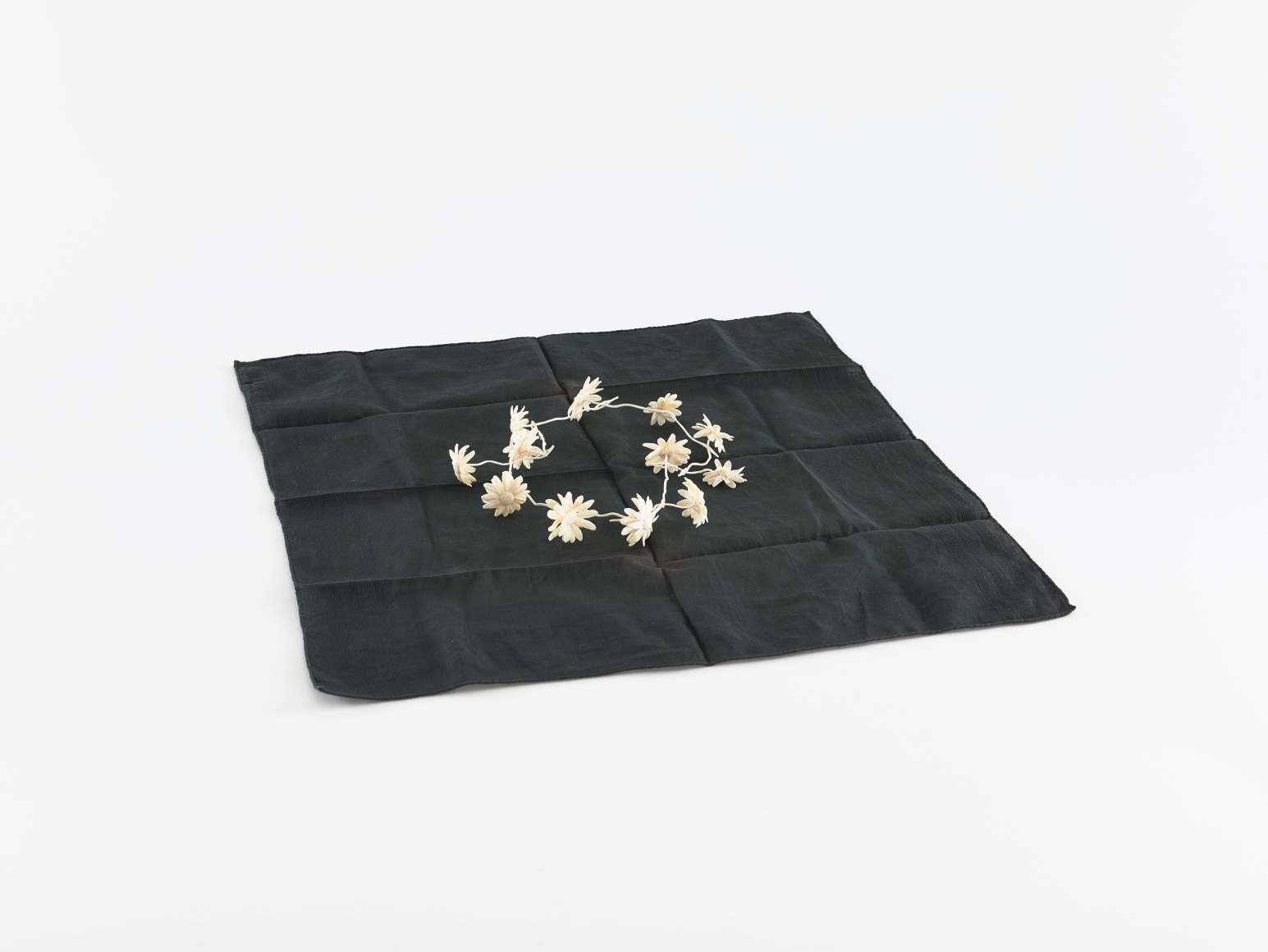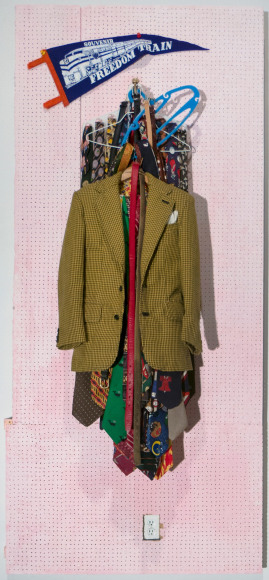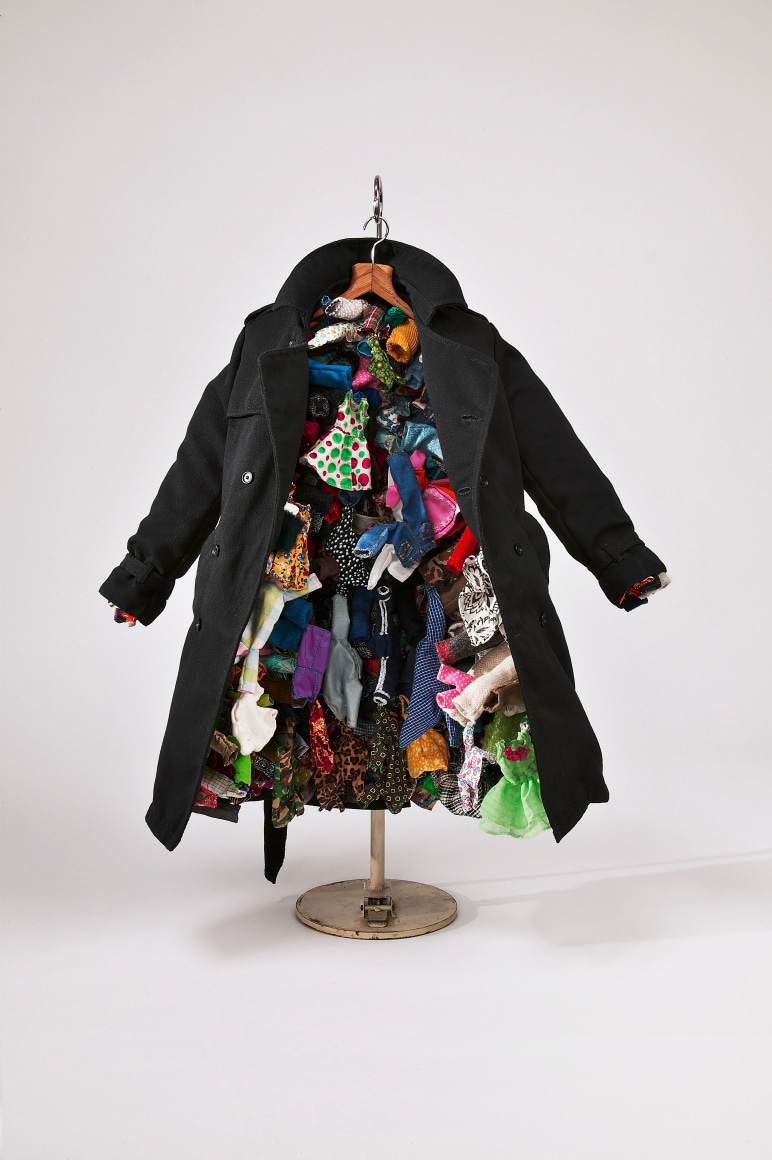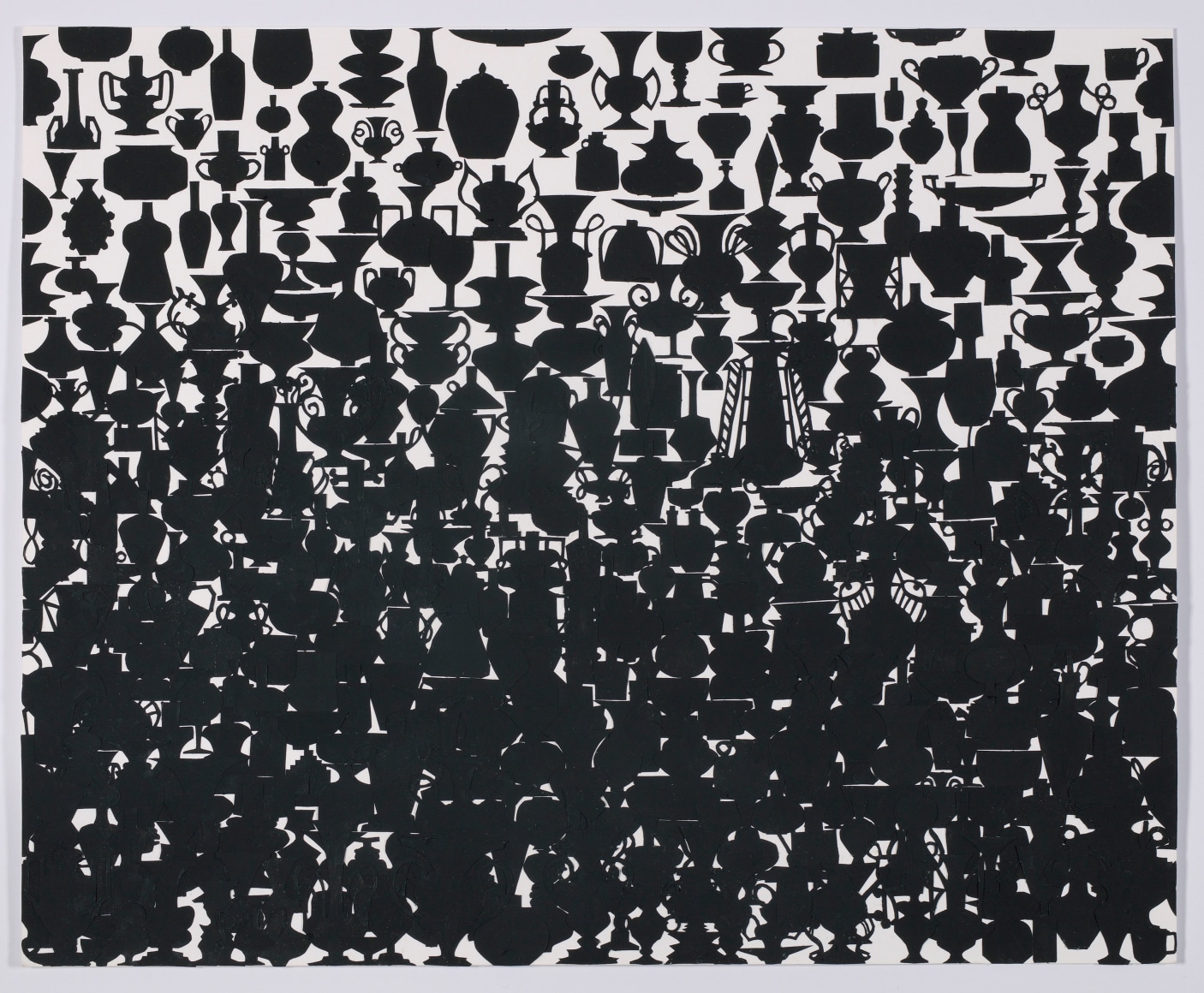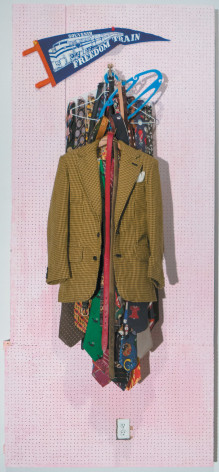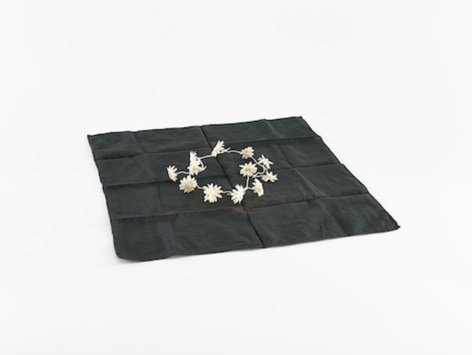by Sanford Schwartz
The surprising, delighting, and sometimes mystifying art of Charles LeDray
NEW YORK – Craig F. Starr Gallery is pleased to present Charles LeDray Works, on view from September 9 through October 29. The exhibition will feature thirteen assemblages and sculptures made between 1990 and 2016. Highlights include LeDray’s first Broken Bear; his first miniature men’s suit; a collection of 130 hand carved, life-size buttons; and his most recent work, an accumulation of 1,400 tiny, hand thrown, black porcelain vessels, arranged in a towering black steel and glass case.
Working without assistants, many of the works often take several years to complete. Finished pieces offer real insight and evidence of the conceptual complexity and time that went into their making. Other unifying themes in LeDray’s works are scale and the materials that he often employs: fabric, porcelain, and human bone. By transforming, replicating, and re-presenting everyday objects aside from their customary contexts (or functions), LeDray is able to create strange and beautiful experiences. His works have an uncanny presence, objective and yet abstract, occupying a realm of concrete imaginary. They mysteriously suggest absence and loss while making present that which remains and endures.
Charles LeDray Works also traces the various applications of the artist’s techniques including his incorporations of found objects and his entirely handmade sculptures. In Tar Bears (1991), two teddy bears slathered with tar embrace atop a found porcelain platter and upside-down tea pot. Broken Bear (1992) lies upon a found Salvation Army soup kitchen plate. The miniature coffee cup in Untitled (Blue diptych) from 1995 was thrown by hand. His first suit sculpture, Becoming/Mister Man (1992), includes hand embroidered labels and store bought buttons. A tour-de-force, Freedom Train (2013-15) on loan from the Wadsworth Atheneum Museum of Art, is entirely crafted by hand: from the peg board to the push pins, from the coat hangers to the neck ties, right down to the dust that was carefully transferred from the studio floor and placed on the work of art.
Overcoat (2004), another highlight, is a small-scale replica of a black, militaristic trench coat that opens to reveal a horde of even smaller men’s and women’s garments. LeDray’s sculptures are immersive environments that exist in many worlds simultaneously. They are at once fantastic and deeply rooted in reality; they recall the past and look to the future; they represent a person both inside and out. As Susan Lubowsky Talbott writes in the opening essay for the exhibition publication, “…he begins his exploration in childhood but ends it in death. LeDray’s terrain is the hinterland of human experience.”
Generously loaned by the artist, the Wadsworth Atheneum Museum of Art, and private collections, the exhibition offers a glimpse into LeDray’s complex and remarkable works and reminds us—quite literally—that things are not always as they seem.
The show is accompanied by a fully-illustrated catalogue, which includes an essay by Susan Lubowsky Talbott, Interim Director of Fabric Workshop and Museum and former Director and CEO of the Wadsworth Atheneum Museum of Art.
About Charles LeDray
Born in Seattle in 1960 and primarily self-taught, Charles LeDray moved to New York in 1989. In 1993, LeDray received the Louis Comfort Tiffany Foundation Award, and in 1997 he was the recipient of the Prix de Rome from the American Academy in Rome. From 2002-2003, LeDray was the subject of a survey exhibition organized by the ICA Philadelphia, which traveled to the Arts Club of Chicago, the Yerba Buena Center for the Arts, and the Seattle Art Museum. In 2009, Artangel, London commissioned MENS SUITS, a major installation in a 19th century Victorian firehouse. In 2010, the ICA Boston organized a comprehensive retrospective, Charles LeDray: workworkworkworkwork, which traveled to the Whitney Museum of American Art and The Museum of Fine Arts, Houston. In 2012, the Bass Museum of Art in Miami Beach presented a solo exhibition. Most recently, his work was installed at Olana and the Thomas Cole Site as part of the exhibition River Crossings: Contemporary Art Comes Home (2015).
LeDray’s work can be found in many major public collections including The Museum of Modern Art; Whitney Museum of American Art; The Metropolitan Museum of Art; Museum of Fine Arts, Boston; Museum of Fine Arts, Houston; San Francisco Museum of Modern Art; Hammer Museum at UCLA; Crystal Bridges; The Des Moines Art Center; The Denver Art Museum; The ICA Boston; Philadelphia Art Museum; Smithsonian Museum of American Art; and Wadsworth Atheneum Museum of Art.
About Craig F. Starr Gallery
Craig F. Starr Gallery is located at 5 East 73rd Street between Fifth and Madison Avenues. Gallery hours are Monday through Saturday from 11am-5:30pm, and by appointment. For general information please view the gallery’s website at www.craigstarr.com.

